|
No |
Title and Author |
Page |
|
1 |
Temporal change of Son Island in Bassac River, Can Tho city, Vietnam by remote sensing Tran Minh Doan1, Dinh Van Duy2* 1 Master student, Faculty of Water Resource Engineering, College of Engineering, Can Tho University; doanm4222017@gstudent.ctu.edu.vn 2 Faculty of Water Resource Engineering, College of Engineering, Can Tho University; dvduy@ctu.edu.vn *Corresponding author: dvduy@ctu.edu.vn; Tel.: +84–906975999 Abstracts: This study utilizes remote sensing to assess the temporal variation of Son Island on the Bassac River, Can Tho City, Vietnam, from 1987 to 2020. The findings indicate that the evolution of Son Island can be divided into two distinct periods. From 1987 to 2013, the island experienced significant migration from upstream to downstream, covering a distance of approximately 250 meters. In contrast, the period from 2013 to 2020 showed stability, with no significant changes in the island’s area or center of gravity. Despite noticeable fluctuations in the island's area throughout the observed period, no clear trend was identified, suggesting overall stability. These fluctuations are likely due to errors in image analysis caused by the coarse resolution of Landsat images, tidal effects, and vegetation changes along the island’s banks. The migration of Son Island is attributed to erosion at the island’s head and deposition at its tail. Keywords: Son Island; Bassac River; Google earth; Satellite image; Remote sensing; Migration. |
1 |
|
2 |
Indicator-based assessment of environmental sustainability of a metalware handicraft village in Hanoi, Vietnam Nguyen Thi Thuy Hang1,2, Pham Thu Hien3, Tran Thi Huyen Nga3, Nguyen Thi Khanh Huyen2, Bui Thi Hoa2, Nguyen Thi Tam Thu4, Nguyen Thi Hoang Ha2* 1 VNU School of Interdisciplinary Sciences and Arts, Vietnam National University, Hanoi, 100000, Vietnam; ntt.hang@vju.ac.vn 2 Vietnam Japan University, Vietnam National University, Hanoi, Luu Huu Phuoc, Hanoi, Vietnam; nth.ha@vju.ac.vn; huyenn0707@gmail.com; buihoa.molisa@gmail.com 3 University of Science, Vietnam National University, Hanoi, 334 Nguyen Trai, Hanoi, Vietnam; phamthuhien_t63@hus.edu.vn; tranthihuyennga@hus.edu.vn 4 Institute of New Technology, Academy of Military Science and Technology, Hanoi 10072, Vietnam; thu.n3t.cnm@gmail.com *Corresponding author: nth.ha@vju.ac.vn; hoangha.nt@vnu.edu.vn; Tel.: +84–968046008 Abstracts: This research was conducted to assess the environmental sustainability of a metalware handicraft village in Hanoi, Vietnam using 17 indicators of 4 components (Environmental systems - S1, Reducing environmental stresses - S2, Reducing human vulnerability - S3, and Social institutional capacity - S4). All indicators were quantified on a scale of 0-1, reflecting a range from low to high sustainability. A combination of soil and water analysis, and a social survey of 67 local households were conducted. The results show that the number of water samples exceeding the allowable limits for wastewater (QCVN 40:2011/BTNMT, Column B), domestic water (QCVN 01-1:2018/BYT), ground water (QCVN 09:2023/BTNMT), and surface water (QCVN 08:2023/BTNMT, Column B) was 13/14 (NH4+), 9/14 (COD), 8/14 (BOD5), 4/14 (PO43-), 5/14 (Fe), and 6/14 (Mn). The concentrations of heavy metals in soil were within acceptable limits for agricultural soil (QCVN 03:2023/BTNMT). The social survey results present high percentages of households dissatisfaction with the quality of air (43%) and water (74.5%), which were also perceived to negatively impact on human health by 67% and 81% of respondents, respectively. The environmental sustainability of the study area is 0.38 (low sustainability) with the following order: S3 (0.25) < S2 (0.26) < S4 (0.44) < S1 (0.57). Solutions on management, policy, and technology are proposed for ensuring environmental sustainability of the metalware handicraft village. Keywords: Environmental Sustainability; Handicraft village; Indicator; Metalware; Vietnam. |
8 |
|
3 |
Integrating UAVs and AI for shrimp pond mapping: A case study in Can Giuoc district, Long An province, Vietnam Tran Ngoc Huyen Trang1,2,3*, Le Van Trung1,2, Vo Le Phu1,2 1 Faculty of Environment and Natural Resources, Ho Chi Minh City University of Technology (HCMUT); tnhtrang.sdh222@hcmut.edu.vn; volephu@hcmut.edu.vn; lvtrungbk@gmail.com 2 Vietnam National University Ho Chi Minh City (VNU-HCM); tnhtrang.sdh222@hcmut.edu.vn; volephu@hcmut.edu.vn; lvtrungbk@gmail.com 3 Department of Geodesy, Cartography and GIS, Ho Chi Minh City University of Natural Resources and Environment; tnhtrang.sdh222@hcmut.edu.vn *Corresponding author: tnhtrang.sdh222@hcmut.edu.vn; Tel.: +84–98615481 Abstracts: Worldwide, the utilization of Unmanned Aerial Vehicles (UAVs) has been deployed in a wide range of resources management practices. The UAVs serve as valuable and visible tools for managing water resources, forests, agriculture, and land use change. Undoubtedly, the application of UAVs surpasses traditional methods in terms of efficiency, offering significant time and cost savings. Meanwhile, Artificial intelligence (AI) has emerged as a critical technology in the realm of information technology, particularly when it comes to image segmentation. The purpose of this study is to integrate UAVs and AI for mapping shrimp farms in Long An province, Mekong Delta. By leveraging AI, we empower systems to learn intricate image features and subsequently identify and segment objects within those images. In the context of modern agricultural management practices, we leverage UAV imagery as input data for AI systems to identify shrimp ponds, the image recognition platform is Deep Learning (DL) based on U – Net structure. Using the shrimp pond boundary on the 1:1000 scale topographic map as reference data, the results of this method showed a recall of 83.3%, corresponding to a miss rate of 16.7%. The precision of the method was 85.7%, corresponding to a misidentified shrimp pond extraction rate of 14.3%. The results suggest that the combination of UAVs and AI to mapping shrimp farms can facilitate efficient monitoring and management practices for local authorities. Thus, this integration is a promising application to assist and enable agri-cultural planning and regional economic development activities. Keywords: UAV; AI; DL; Shrimp pond map. |
22 |
|
4 |
Saltwater damage in the Vietnamese Mekong Delta: A case study of agricultural livelihoods in Hung My commune, Tra Vinh province Hung Tan Nguyen1, Van Hiep Huynh2*, Kiet Anh Ly Ngo1 1 Sustainable Urban Development (SUD) program - Vietnamese German University (VGU); hung.nt@vgu.edu.vn; anhkietqh05@gmail.com 2 Department of Civil Engineering, School of Engineering and Technology, Tra Vinh University; hvhiep@tvu.edu.vn *Corresponding author: hvhiep@tvu.edu.vn; Tel: +84–963887689 Abstracts: This study examines the considerable impact of Saline Intrusion (SI) on the livelihoods of households (HH) in Vietnam’s Mekong Delta (VMD) which is main rice production powerhouse of the country. As a notable occurrence in the region, its damage has been evaluated through both quantitative and qualitative approaches. The principal conclusions are to the identification of capital elements via the examination of sustained damage and resilience in addressing forthcoming crises. The analysis of gathered data has shown the growing threat to the estuary’s agricultural output caused by the incursion of SI. This has particularly affected food production, which is a crucial and longstanding industry in the VMD’s economy. Therefore, it is essential to prioritize the implementation of sustainable agricultural practices and develop ways to bolster resilience, which includes enhancing disaster preparedness and promoting sustainable livelihoods. This paper means to setup precedent for future studies, advocating for the inclusion of socioeconomic and ecological factors in policy framework development to mitigate the risks posed by environmental alteration and improve the resilience and adaptability of impacted farmers. Keywords: Salinity intrusion; Agriculture base; Loss threshold; Household livelihoods; Resilience quality; Adaptive capacity. |
33 |
|
5 |
Occurrence and distribution of pesticide residues in coffee grow-ing soil at Lam Ha district, Lam Dong province Dang Viet Lam1,2*, Vu Duc Toan3 1 Graduate University of Science and Technology, Vietnam Academy of Science and 2 Chemical and Environmental Laboratory, Quality Assurance and Testing Center 1, Commission for Standards, Metrology and Quality of Viet Nam, Ministry of Science and Technology; dangvietlam1980@gmail.com 3 ROOM Strong Research, Environmental and Life Science Research Laboratory, Thuyloi University; vuductoan@tlu.edu.vn *Corresponding author: dangvietlam1980@gmail.com, Tel.: +84–989655589; vuductoan@tlu.edu.vn, Tel.: +84-936027466 Abstracts: Thirty soil samples from 4 communes of Lam Ha district were collected in May and November 2023. The pH, moisture content, organic carbon and mechanical composition were investigated. Two group of pesticides were analyzed including Organophosphorus (Diazinon, Chlorpyrifos, Profenofos, Fenitrothion, Ethoprophos, Glyphosate) and Carbamate (Carbaryl, Mancozeb, Carbosulfan). Maximum concentration of Chlorpyrifos, Profenofos and Carbosulfan founded in soil samples were 391, 63 and 41 µg/kg, respectively. The risk quotient (RQ) of pesticides in coffee growing soils were evaluated for ecological risk assessment. In this study the order from very low to high risk in ascending order from Phi To, Nam Ha, Dong Thanh and Me Linh, respectively. Keywords: Pesticides in soil; Soil pollutions; Organophosphorus; Carbamates; Risk assessment. |
47 |
|
6 |
Mapping hydrological drought under the CMIP6 climate change scenarios in sub-basin scale: A case study in the upper part of Dong Nai river basin Pham Hung1*, Le Van Trung3,4, Vo Le Phu3,4 1 Department of Natural Resources and Environment Lam Dong Province, Dalat, Vietnam, 54 Pasteur, Ward 4, Dalat City, Lam Dong Province, Vietnam; hungmtk25@gmail.com 2 Faculty of Environment and Natural Resources, Ho Chi Minh City University of Technology (HCMUT), 268. Ly Thuong Kiet Street, District 10, Ho Chi Minh City, Vietnam; lvtrung@hcmut.edu.vn; volephu@hcmut.edu.vn 3 Vietnam National University Ho Chi Minh City, Linh Trung Ward, Thu Duc District, Ho Chi Minh City, Vietnam; lvtrung@hcmut.edu.vn; volephu@hcmut.edu.vn *Corresponding author: hungmtk25@gmail.com; Tel.: +84–886138809 Abstracts: Hydrological droughts have become more severe due to the compounded effects of climate change and anthropogenic activities. This study aims to assess how climate change could impact hydrological droughts at the sub-basin scale for the Upper Part of Dong Nai (UPDN) river basin. The study used the Soil and Water Assessment Tool (SWAT) to simulate hydrological conditions based on climate change scenarios of SSP2-4.5 and SSP5-8.5 from the CMIP6 projections for the future period of 2030s (2021-2040) and 2050s (2041-2060). The streamflow drought index (SDI) was applied to evaluate the drought severity and frequency. The findings indicate a clear increasing trend in minimum (Tmin) and maximum temperatures (Tmax) relative to yearly rainfall. Under the SSP2-4.5 scenario, yearly rainfall shows a slight increase. However, under the SSP5-8.5 scenario, annual rainfall has a slight increase in the West-Southwest and a decrease in the East-Southeast regions. Rainfall trends show a decrease in the dry season and an increase in the rainy season. The frequency and severity of hydrological droughts can vary between sub-basins. Da Tam, Don Duong, Da Quyn, Da Dang, Dak Nong, Dong Nai 2, and Dak R‘Keh are the sub-basins that have more extreme drought conditions compared to the rest of the basins. These results emphasize the need for targeted drought management strategies in the UPDN river basin to build resilience against future climate impacts. Keywords: Climate change; Mapping hydrological drought; SWAT model; CMIP6; The upper part of Dong Nai river basin; Drought management. |
57 |
|
7 |
Development of geomechanical model for determination of elastic modulus and study on law of caving span induced by mechanized longwall mining Pham Van Chung1, Nguyen Quoc Long1,4*, Nguyen Dinh Huy2, Dinh Thanh Tuan3, Luu Van Huyen5 1 Hanoi University of Mining and Geology, Hanoi, Vietnam; phamvanchung@humg.edu.vn 2 Hanoi University of Civil Engineering, Hanoi, Vietnam; huynd@huce.edu.vn 3 Dong Hai Measurement Company Limited, My Tho City; ktbddonghai@gmail.com 4 Innovations for Sustainable and Responsible Mining, Hanoi University of Mining and Geology, Hanoi, Vietnam; nguyenquoclong@humg.edu.vn 5 Hanoi University of Natural Resources and Environment; lvhuyen@hunre.edu.vn *Corresponding author: nguyenquoclong@humg.edu.vn; Tel.: +84–916196336 Abstracts: A geomechanical model is developed to determine the elastic modulus, to analyze the rules of rock and surface displacement, and study the caving span caused by mechanized longwall mining. The rules of rock deformation and displacement have been determined, including the stress distribution, the development of the failure zone, the height of the failure zone, the caving span of the longwall, the order of layer arrangement, the displacement deformation vector, the maximum subsidence, and the boundary displacement angle. In this paper, the author uses the Rocdata program to determine the elastic modulus (E), cohesion (C), and internal friction angle (φ) as inputs for the geomechanical model. The software RS2 (Phase 2) from Rocscience Inc. (Canada) is then used to calculate some parameters and displacement quantities. The results showed that the maximum subsidence in the dip direction is ƞ = -2.250 m and in the strike direction ƞ = -0.659 m. The boundary displacement angle is β0 = 47°. The caving height is H = 10 m. The caving repeats at the span 10th, meaning that the length of the longwall mined in the strike direction reaches 65 m. Afterward, the caving span and the height of the caving zone repeat. Keywords: Deformation and displacement; Geomechanical model; Elastic modulus; Caving span of the longwall. |
76 |
|
8 |
Prediction of landslide hazard using LS-RAPID model: A case study in the Tia Dinh area (Dien Bien province, Vietnam) Nguyen Duc Ha1*, Nguyen Hoang Ninh2, Tran The Viet3, Nguyen Thanh Tung2, Le Duc Tho2, Nguyen Huy Duong2 1 Vietnam Geological Department; nh14vn@gmail.com 2 Vietnam Institute of Geosciences and Mineral Resources; ninh.dcks@gmail.com; thanhtung.vigmr@gmail.com; glg.tanet@gmail.com; nguyenhuyduong112358@gmail.com 3 Thuy loi University; tranthev@gmail.com *Corresponding: nh14vn@gmail.com; Tel.: +84–989258025 Abstracts: Landslides represent a severe natural hazard, particularly in mountainous areas where steep slopes, intense rainfall, and unstable geological conditions frequently trigger destructive ground movements. This study focuses on assessing the potential landslides in Tia Dinh Commune, Dien Bien province, Vietnam, using the LS-RAPID model to simulate and predict potential hazards. By conducting extensive field surveys, geophysical measurements, and applying extreme-case scenario simulations, we identified three high-risk landslide zones (S1, S2, S3) alongside a larger area, zone S, which poses the most significant threat due to its potential for widespread and rapid material displacement. Despite challenges posed by limited geotechnical data in remote regions, the LS-RAPID model effectively predicted movement patterns, velocity, and impact zones of landslides, significantly improving our understanding of landslide dynamics. The results underscore the importance of integrating landslide risk assessments into local land-use planning to ensure safer community development. Additionally, we recommend the installation of groundwater monitoring devices at strategically identified locations within these high-risk zones to support early warning systems and enable timely preventive measures. Our findings highlight the need for a proactive approach to landslide risk management, combining prediction models with comprehensive monitoring strategies. This research provides a valuable framework for disaster preparedness, offering insights adaptable for regions facing similar landslide threats. Keywords: Landslide hazard; LS-RAPID model; Tia Dinh commune. |
90 |

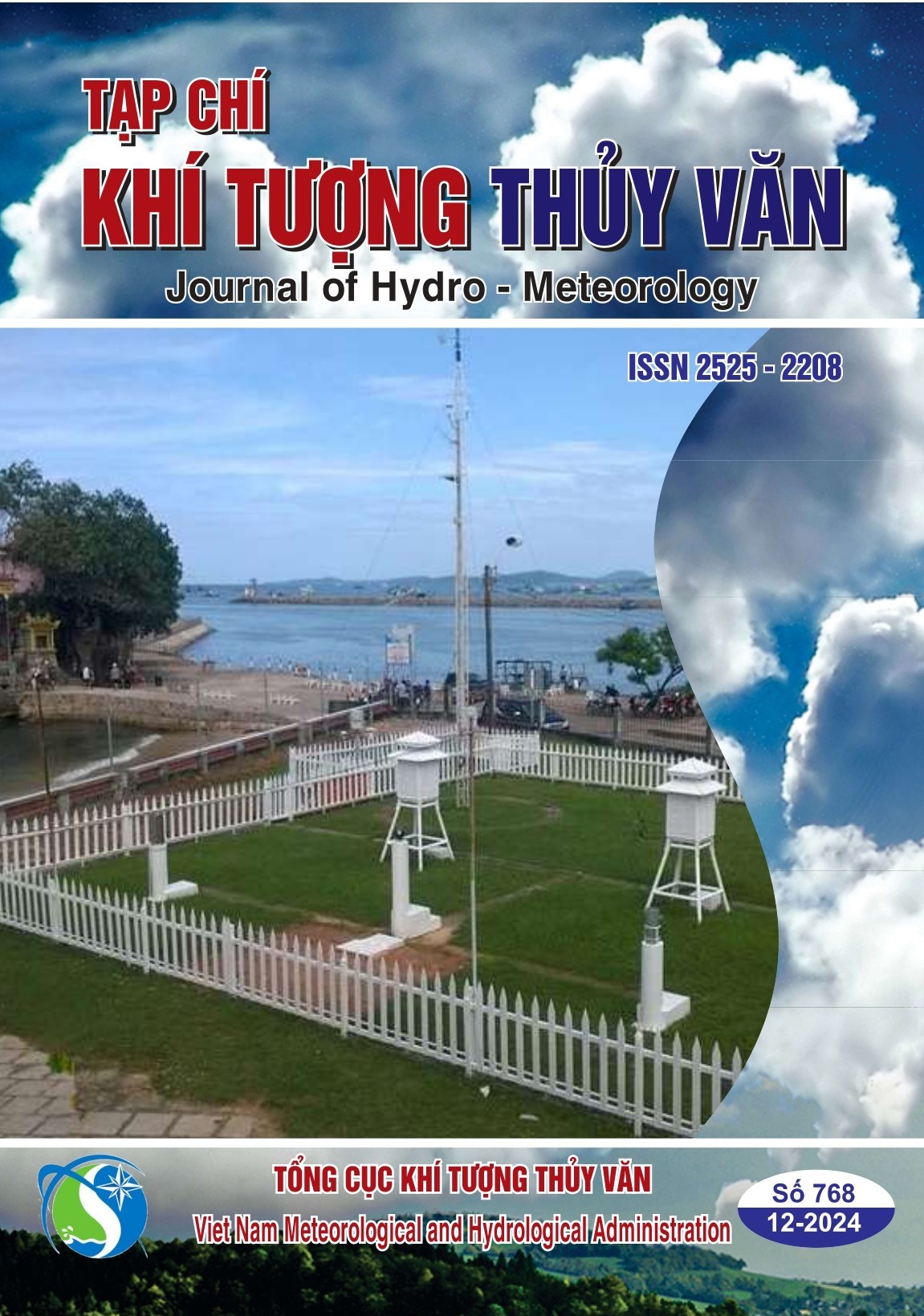
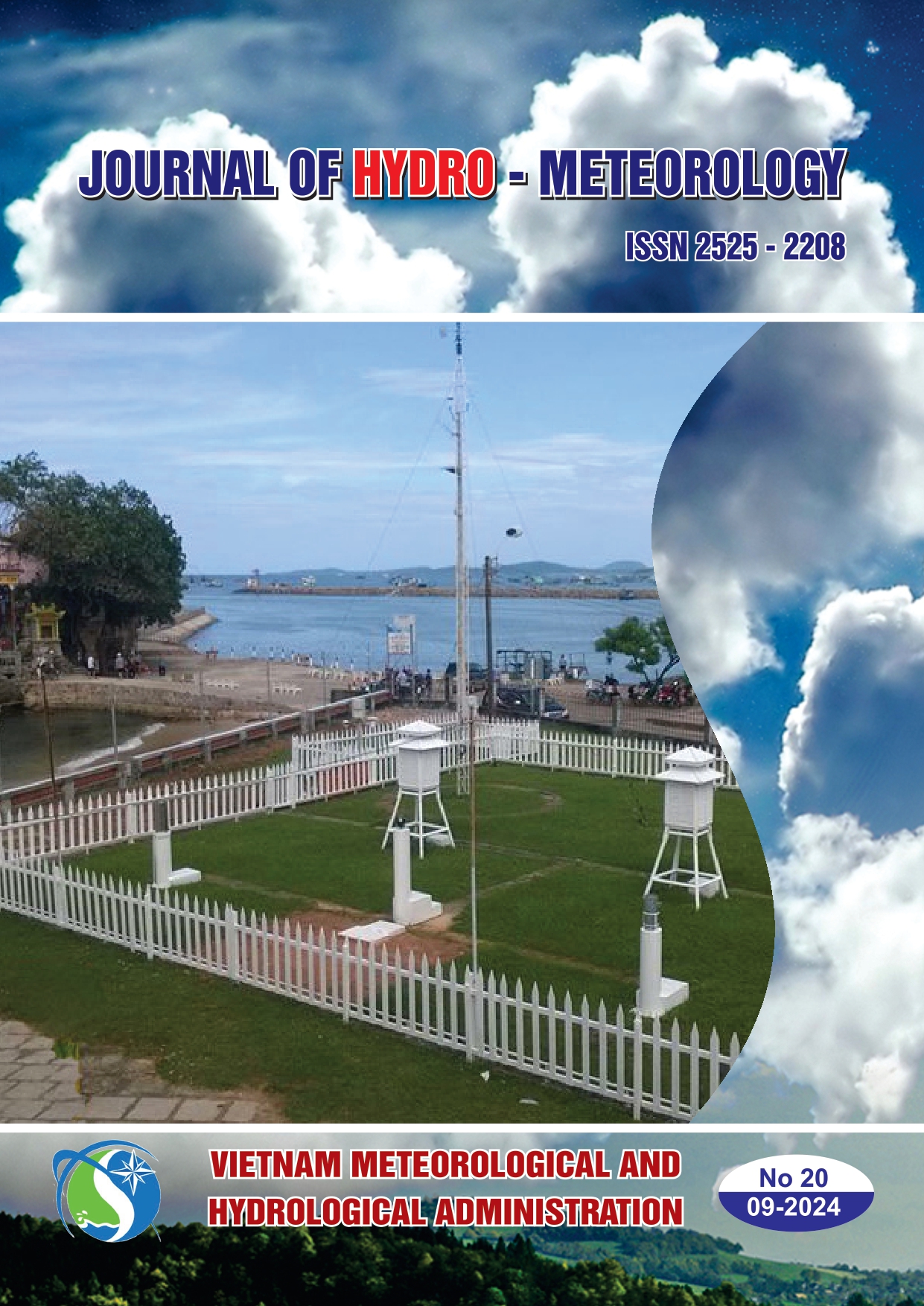
-page-0001.jpg)
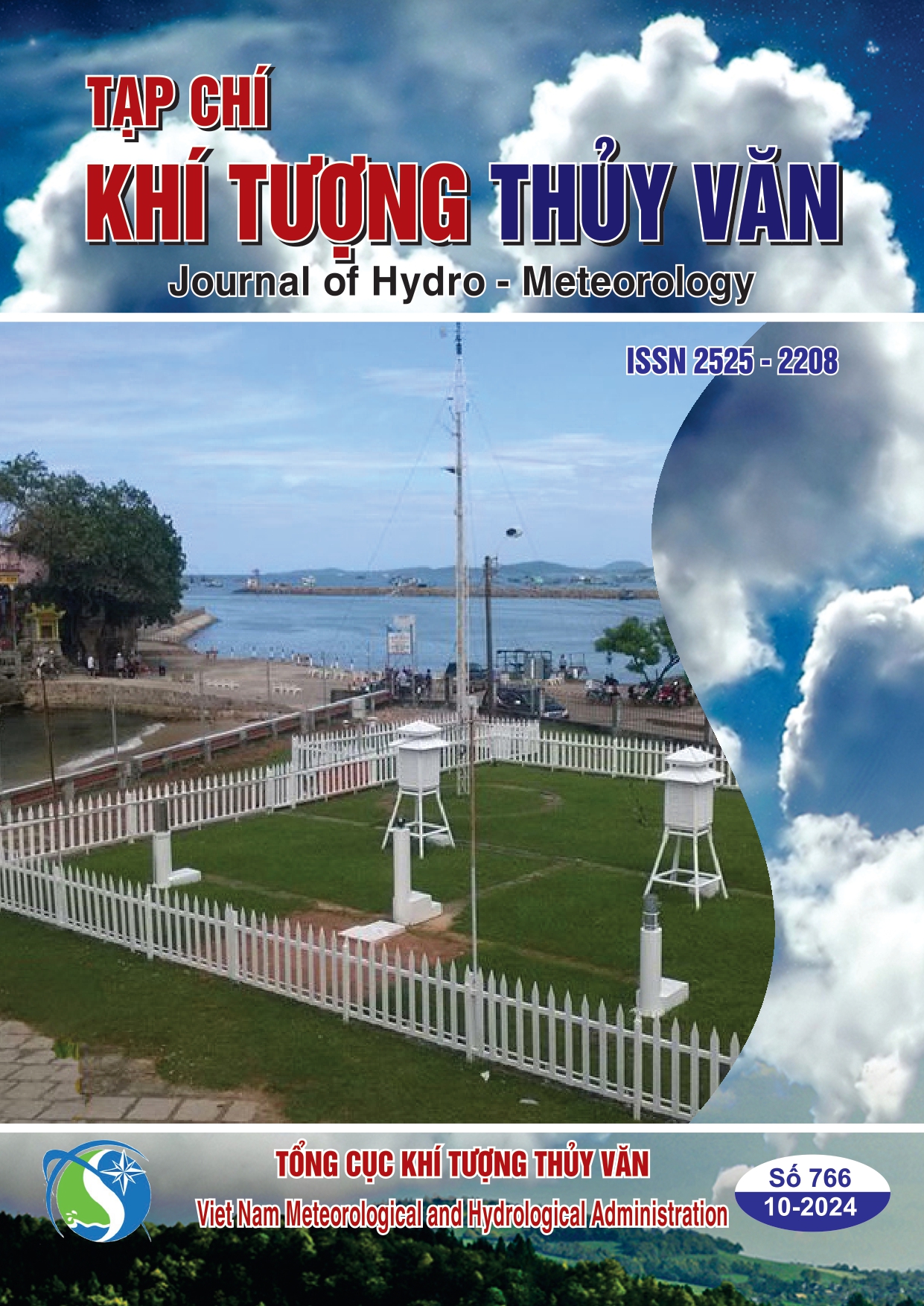
-page-0001.jpg)
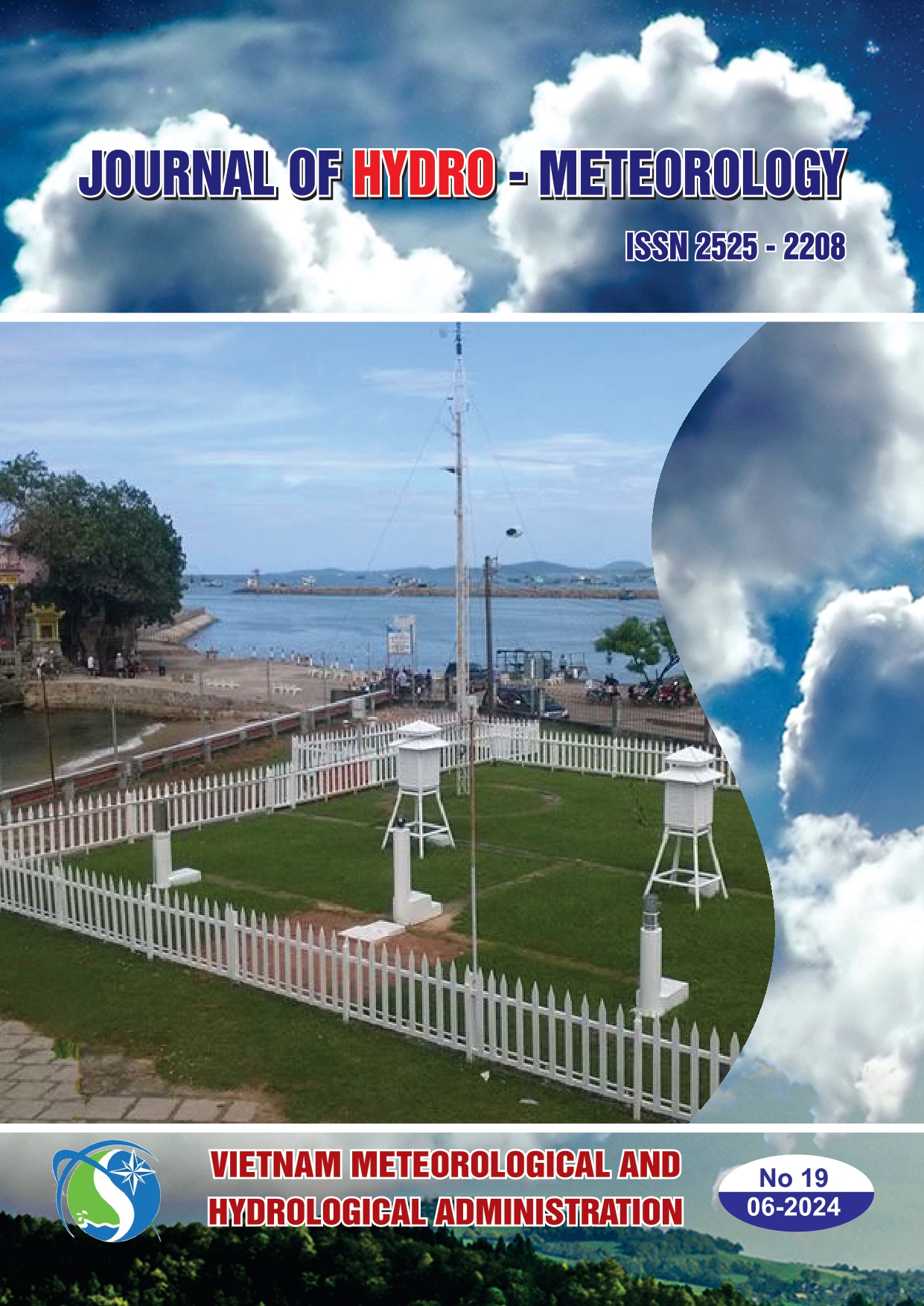
-page-0001.jpg)
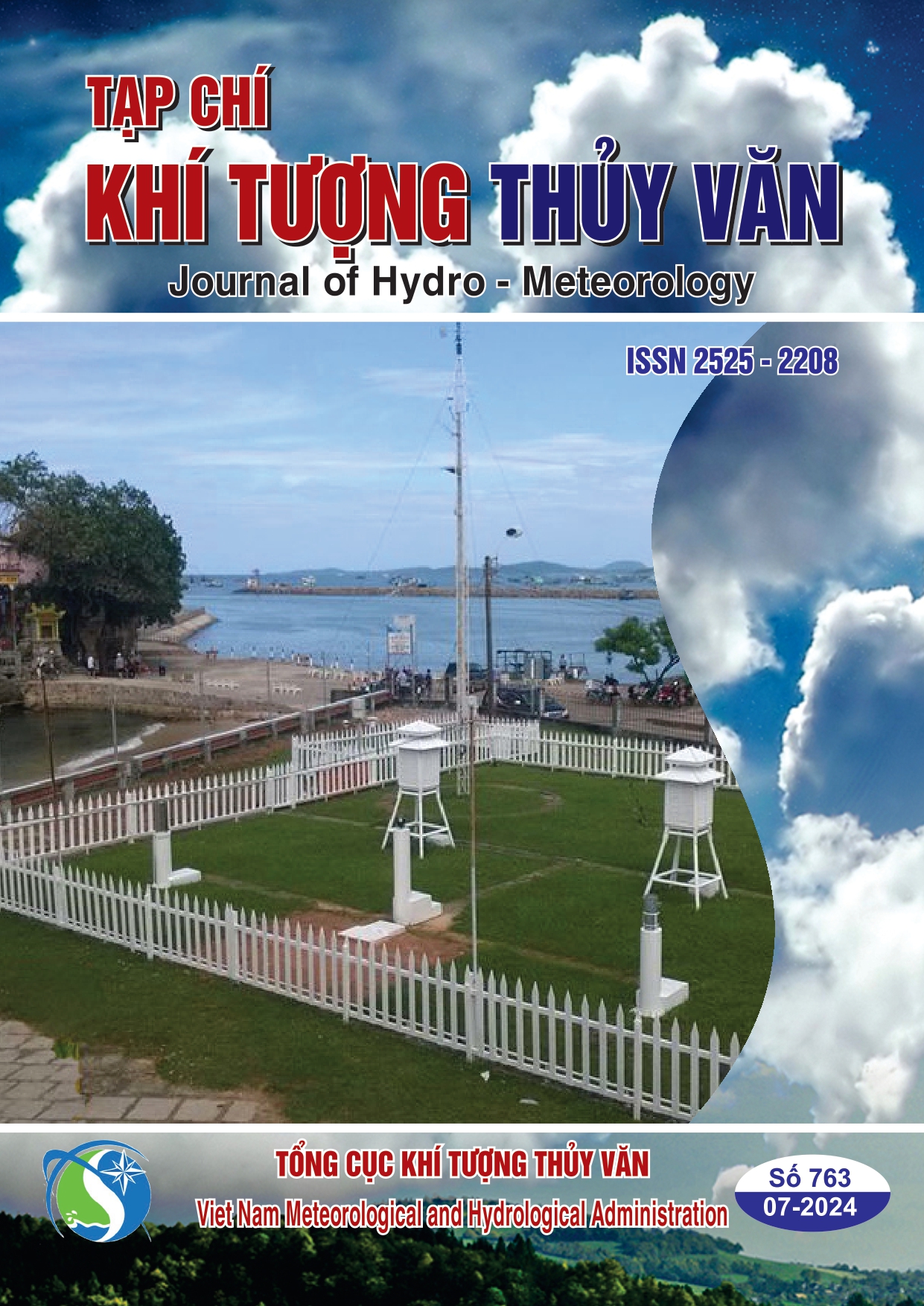
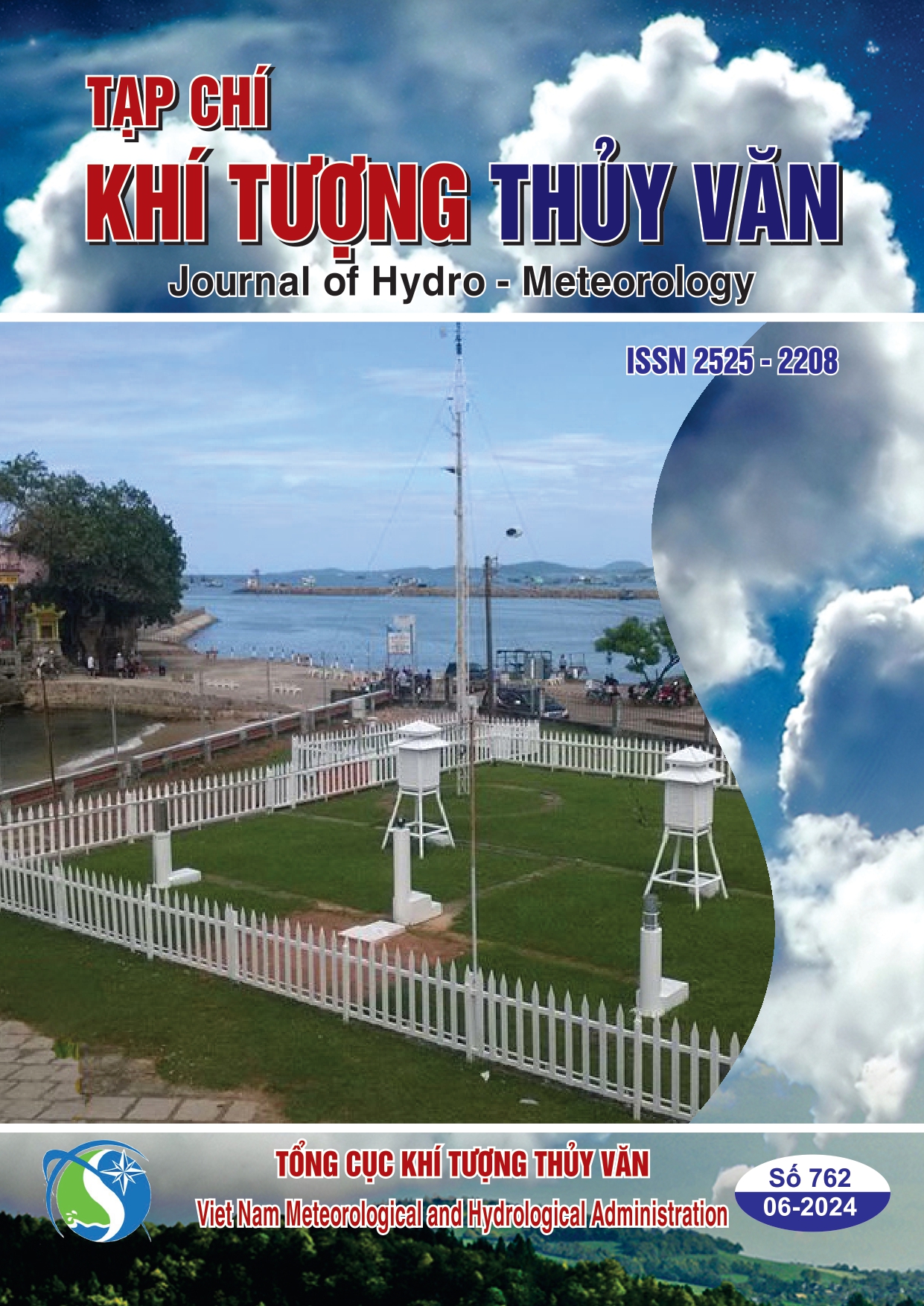
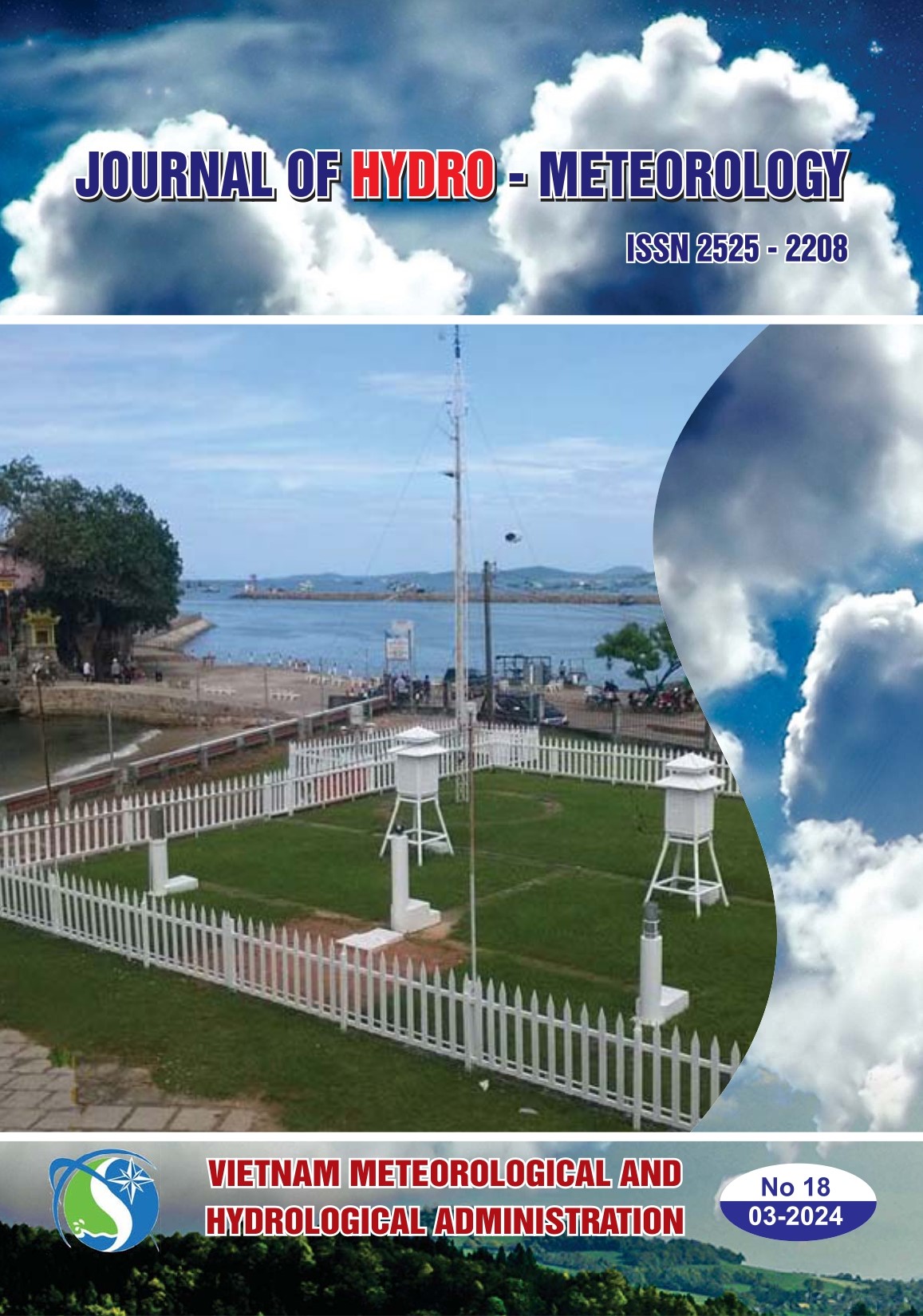
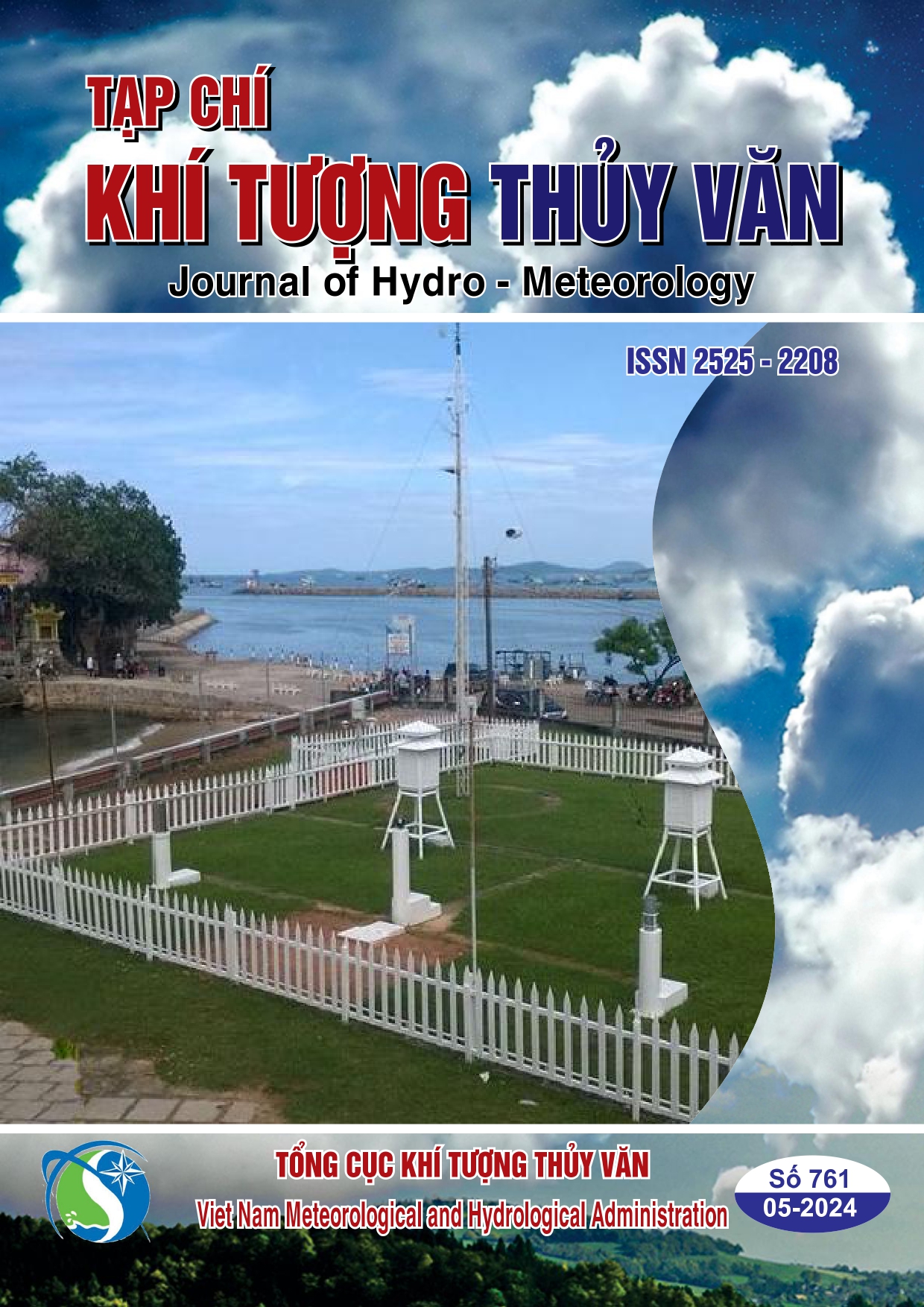

 Sáng ngày 03/02/2025, tại Hà nội, Tổng cục Khí tượng Thủy văn (KTTV) đã có cuộc họp triển khai nhiệm vụ trọng tâm sau Tết Nguyên đán.
Sáng ngày 03/02/2025, tại Hà nội, Tổng cục Khí tượng Thủy văn (KTTV) đã có cuộc họp triển khai nhiệm vụ trọng tâm sau Tết Nguyên đán. 




.jpg)
.jpg)